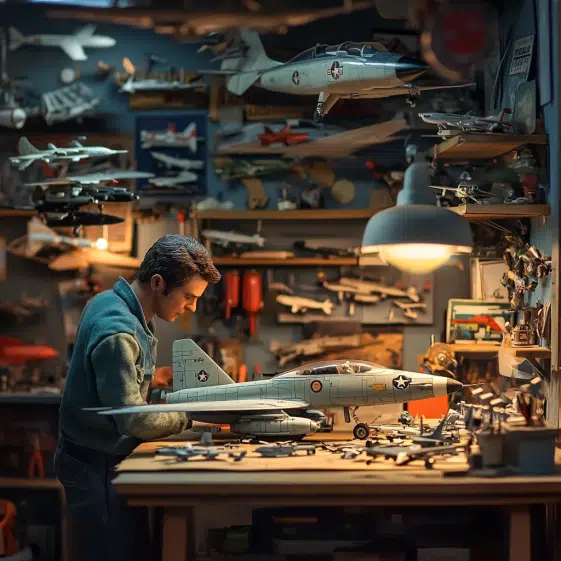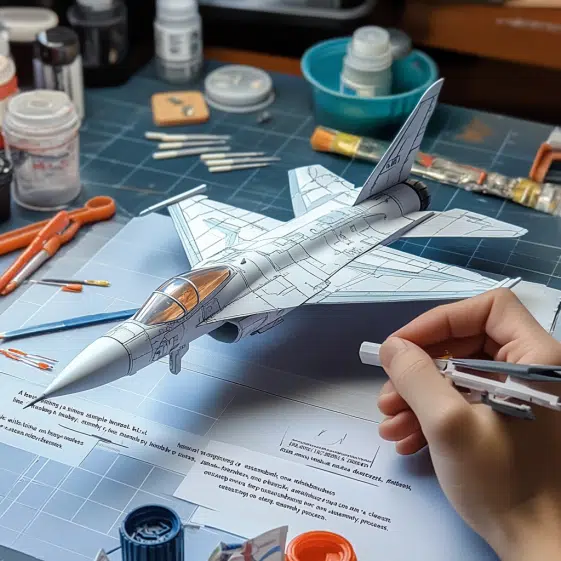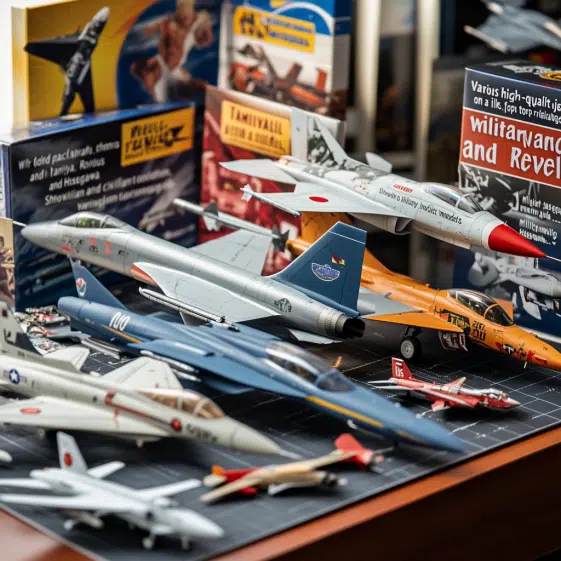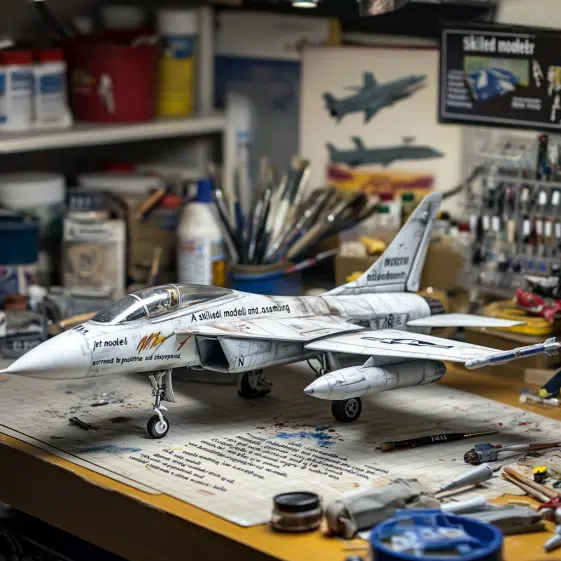Exploring the World of Jet Models
A Guide to Building and Collecting
Why Jet Models Are a Popular Hobby Choice Among Enthusiasts
Jet models have become one of the most popular hobbies for enthusiasts around the world, and it’s easy to understand why. The thrill of building, collecting, and displaying these miniature aircraft appeals to people of all ages, from beginners to seasoned modelers. Whether it’s the fascination with aviation history, the challenge of constructing intricate models, or the joy of showcasing a beautifully crafted piece, jet models offer something for everyone.
One of the main reasons why jet models are so popular is their connection to real-world aviation. Many people are drawn to the incredible engineering and design behind military and commercial jets. For enthusiasts, building a model jet allows them to engage with aviation in a hands-on way, learning about the history and technology behind these iconic machines. The process of recreating a jet model, whether it’s a fighter jet like the F-16 or a commercial airliner like the Concorde, can feel like paying tribute to the aircraft’s role in history, its design innovations, and the stories it tells. For history buffs, jet models offer a chance to delve deeper into the aircrafts used in wars, such as the Cold War, or the technological advancements seen in the post-WWII era. Explore the world of aviation and find the best flight deals. Discover fascinating aircraft history and check out our collection of WW2 aircraft models. Travel through time and the skies!

Another factor that makes jet models such an appealing hobby is the wide range of complexity available in model kits. There are options for all skill levels, from simple snap-together models to highly detailed kits that require advanced assembly skills. For beginners, starting with an easy-to-assemble model can offer a satisfying experience, while more experienced modelers can tackle complex kits that feature realistic details, intricate parts, and high-quality materials. This adaptability makes jet models a hobby that can evolve as one’s skills grow.
Moreover, the world of jet models offers a rich variety of aircraft to choose from, ensuring that there is something for every enthusiast. From military jets like the iconic F-22 Raptor or the supersonic British Harrier, to civilian jets like the Boeing 747, modelers can choose from an array of aircraft that appeal to different interests. Some people are fascinated by the military power and technology of fighter jets, while others may prefer the elegant lines and engineering behind commercial airliners. This variety keeps the hobby exciting and encourages people to build collections, showcasing different aircraft models and learning more about aviation along the way.
The sense of achievement that comes with completing a jet model also contributes to its popularity. There is something incredibly rewarding about assembling a kit, painting it, and then standing back to admire the finished product. It’s a creative and often meditative process that requires attention to detail, patience, and focus. The finished model is a testament to the time and effort invested, which brings a deep sense of satisfaction to hobbyists. Additionally, many modelers enjoy the idea of displaying their completed jet models, whether in a display case at home or at exhibitions, allowing them to share their creations with others who appreciate the craft.
Finally, jet models are often part of a larger community of aviation enthusiasts, where individuals can share tips, techniques, and experiences. From online forums to local clubs, there is a vast network of people who share a passion for the hobby. This sense of community fosters creativity, learning, and collaboration, making the hobby even more enjoyable and engaging. Whether you’re seeking advice on painting techniques or looking for rare kits to add to your collection, the shared enthusiasm for jet models creates an environment where enthusiasts can connect and grow their passion together.
In conclusion, jet models are a popular hobby choice because they offer a unique blend of history, creativity, challenge, and satisfaction. Whether you’re drawn to the technology behind aircraft, the intricate design of the models, or the joy of creating something with your hands, jet models provide an enriching and enjoyable experience. The ability to start small and gradually take on more advanced projects ensures that this hobby can grow with the modeler, making it an exciting and fulfilling pursuit for years to come. Explore the best deals on airline tickets for your next adventure. Plus, if you love aviation, check out our guide on plastic model aeroplane kits for a fun and creative hobby. Take your passion to new heights!
How to Get Started with Jet Models: A Beginner's Guide
Getting started with jet models can be an exciting and rewarding experience for anyone interested in aviation or model building. Whether you are a complete beginner or have some experience with other types of models, learning how to assemble and display jet models can become a fulfilling hobby. With the right guidance, tools, and a little patience, you can begin your journey into the world of jet models and start building your collection. Here’s a beginner’s guide to help you get started.
The first step in diving into the world of jet models is choosing the right model kit. When you’re just starting out, it’s important to pick a model that suits your skill level. Many model kits are designed for various experience levels, from beginner to advanced. As a beginner, look for simpler jet models that are easier to assemble. These kits typically have fewer parts, which makes the process more manageable. Additionally, choose a model with clear instructions and fewer intricate details. For example, you could start with a simple 1/72 scale model of a well-known jet like the F-16 or a commercial airliner like the Boeing 737. These models provide a good introduction to the hobby without overwhelming you.
Once you’ve selected your first jet model, it’s time to gather the necessary tools. Basic modeling tools include a hobby knife for trimming parts, tweezers to handle small pieces, glue or cement for assembly, and sandpaper for smoothing out rough edges. Some kits also require paints, brushes, and other materials for detailing. As a beginner, you don’t need to purchase every tool at once, but having a basic set will make the building process easier and more enjoyable. Be sure to check the kit’s requirements to see if any special tools or paints are needed.
Before you begin assembling your jet model, take the time to read through the instructions carefully. Model kits usually come with step-by-step instructions that guide you through the assembly process. It’s essential to follow these instructions in order, as skipping steps can lead to errors or difficulties later on. For your first model, don’t rush through the process—take your time and work slowly. This will help ensure the pieces fit together properly and will help you avoid mistakes that could be frustrating to correct. Discover the best deals on airline tickets for your next adventure. Enjoy a seamless travel experience and, for aviation enthusiasts, check out our collection of Planes Toys. Fly high with fun!

As you begin assembling your jet model, one of the most important aspects is patience. Model building requires focus and attention to detail, so don’t rush through the assembly. Take breaks if needed and return to the project with a fresh perspective. Carefully attach each part using the appropriate glue or cement, and allow each piece to dry before moving on to the next one. When gluing small pieces together, use tweezers for better control. Also, try to keep your workspace clean and organized to avoid losing any small parts.
Painting and detailing are where you can add your personal touch to the model. While some beginner kits come with pre-painted parts, others will require you to paint certain areas. Painting your jet model is an important part of the process, as it brings the model to life and enhances its realism. Start by using a primer to coat the model, and then apply layers of paint for the various details. You can use paintbrushes for smaller areas or an airbrush for a smoother, more even finish. Look up reference photos of the jet you’re modeling to ensure accurate color schemes and markings.
Once your model is fully assembled and painted, it’s time to display it. Displaying your jet models can be just as fun as building them. Consider using a display case to protect your model from dust and damage while showing it off. You can also create a custom base for your model, such as a small runway or a diorama that reflects the jet’s role in history.
Getting started with jet models is an enjoyable process that can be both educational and rewarding. By selecting the right model, gathering the necessary tools, following the instructions carefully, and taking your time with each step, you can create beautiful models that will bring the world of aviation to life. With practice, your skills will improve, and you’ll be able to tackle more intricate and advanced models. Enjoy the process, and most importantly, have fun as you begin your journey into the fascinating world of jet models!
Top Brands and Models to Look for in Jet Models
When it comes to building and collecting jet models, choosing the right brand and model is essential to ensuring a satisfying and enjoyable experience. With so many manufacturers offering a wide variety of jet models, it can be difficult to know where to start. Fortunately, several brands are known for producing high-quality kits that cater to different skill levels and preferences. These brands consistently offer models that are accurate, detailed, and enjoyable to assemble. Here, we’ll explore some of the top brands and popular jet models you should consider.
One of the most well-known and respected names in the world of model kits is Tamiya. Tamiya is renowned for its precision engineering and attention to detail, making their jet models a favorite among enthusiasts. Their kits often come with highly detailed parts, clear instructions, and an overall satisfying assembly experience. For beginners, Tamiya offers excellent options such as the Tamiya 1/72 F-16 Fighting Falcon. This model is known for its accuracy and relatively simple construction, making it a perfect starting point for new modelers. For those with more experience, Tamiya’s 1/48 F-14 Tomcat provides a more challenging build, with intricate details that showcase the iconic aircraft’s design.

Another brand that stands out in the world of jet models is Revell. Revell has a long history of producing quality model kits, including a range of jet models that appeal to both beginners and experienced builders. Revell’s kits tend to offer great value for the money, often providing an excellent balance between quality and affordability. A popular model from Revell is the Revell 1/48 F-22 Raptor, which is a modern stealth fighter jet that presents a fun challenge with its complex design. For those looking for something more classic, the Revell 1/72 Boeing 737-800 provides an excellent choice for those interested in commercial jets.
Airfix is another top brand for jet model enthusiasts, particularly for those interested in military aircraft. Known for their British heritage, Airfix offers a variety of jet models that span different eras of aviation. Airfix kits are typically easy to assemble, making them a good option for newcomers, though they still provide satisfying complexity for more seasoned modelers. One standout model from Airfix is the 1/72 Harrier GR5, a British jet that can perform vertical take-offs and landings, adding an extra layer of interest for modelers. Airfix also offers the 1/72 Hawker Hunter, another classic British jet, perfect for collectors and builders who appreciate military aviation history. Explore the best airline ticket deals and travel with comfort. Learn more about different aircraft and, moreover, check out our guide on Model of Planes to discover their features. Fly with confidence!
Hasegawa is a Japanese brand that is highly regarded for producing some of the most detailed and accurate jet model kits on the market. Hasegawa’s models are often praised for their high-quality plastic, fine detail, and realistic decals. These models cater more to experienced modelers, offering complex and intricate designs. One of the top models from Hasegawa is the 1/48 F-4 Phantom II, a multi-role fighter jet that has seen service in various air forces around the world. The 1/72 Boeing 737-800 is also a great option for those interested in a smaller, commercial aircraft model, offering plenty of detail and accuracy in its construction.
Lastly, Kits World is a brand that focuses on highly detailed and accurate decal sets for modelers. While not a model manufacturer in itself, Kits World is an excellent resource for enhancing your jet models with authentic markings and decals. For modelers who already have a base jet model from brands like Tamiya or Hasegawa, Kits World provides additional detail that can make your aircraft look even more realistic and unique. Their decals often reflect specific aircraft markings from various historical periods, including World War II and modern military jets.
There are several top brands to consider when it comes to jet models, each offering a variety of kits for different experience levels and preferences. Whether you’re just starting out or looking for a more complex build, brands like Tamiya, Revell, Airfix, Hasegawa, and Kits World provide an excellent range of options. Choosing the right brand and model will ultimately depend on your interests, skill level, and the type of aircraft you’d like to build, but with these trusted brands, you’ll be sure to enjoy the process of assembling your own jet models.
Tips and Tricks for Assembling and Displaying Jet Models
Assembling and displaying jet models is an enjoyable and rewarding hobby that combines creativity, patience, and attention to detail. Whether you are building your first jet model or have completed several, following some useful tips and tricks can help improve your results and make the process smoother. Here are some practical guidelines to help you assemble and display your jet models with precision and care.
The first step in assembling jet models is ensuring you have the right tools and workspace. A clean, well-lit area is essential for building, as it allows you to clearly see the details and small parts that go into the model. Make sure you have a flat surface to work on, such as a desk or table, and use a cutting mat to protect the surface from any damage. Essential tools include a hobby knife, fine tweezers, plastic cement or glue, sandpaper, and files. If you plan on painting your model, an airbrush or paintbrush, along with paints designed for plastic models, will be necessary.
Before you begin assembling your jet model, it’s important to thoroughly read through the instructions. Many jet model kits come with step-by-step guides that explain the order in which the parts should be assembled. Following the instructions carefully will help prevent mistakes and ensure your model is put together in the right sequence. Some kits may include parts that need to be trimmed or cleaned before assembly, so taking your time to prep these pieces is essential. Use sandpaper or a file to smooth any rough edges on the parts to ensure a clean fit.
As you begin putting the pieces together, always use the appropriate type of glue or cement. Some modelers prefer using liquid cement because it melts the plastic slightly, resulting in a stronger bond. For jet models, it’s important to glue parts in small sections at a time, allowing each piece to dry fully before moving on. This prevents parts from shifting and ensures a secure fit. Be cautious with the amount of glue you use, as excess glue can leave unsightly marks or damage the model.

Painting your jet model can be one of the most enjoyable aspects of the process. It allows you to add realistic details and personal touches to your aircraft. If you’re using an airbrush, ensure you practice first on scrap plastic to get the feel for the tool and control the spray. Start with a primer coat to provide better adhesion for the paints. When painting, use thin layers and build up the color gradually to avoid drips or streaks. Pay close attention to reference images of the real jet to match the color scheme and markings accurately. This will help your model resemble the real aircraft as closely as possible.
Once your jet model is fully assembled and painted, the next step is displaying it. Proper display can enhance the model’s appearance and preserve its condition. Consider placing your model in a display case to protect it from dust, dirt, and accidental damage. Display cases with glass panels are ideal for showcasing your jet models while keeping them safe. If you prefer a more creative presentation, you can build a diorama to complement the model. For example, you could create a small runway scene or a hangar diorama to make the jet appear as though it’s ready for takeoff.
In addition to a display case or diorama, proper lighting is also essential for showcasing your model. Place the model in an area with adequate lighting to highlight its details. Avoid direct sunlight, as it can cause the paint to fade over time. LED lights can be a great choice because they provide bright, even lighting without generating too much heat.
Finally, when handling your jet models, be gentle to avoid any damage. Use tweezers or soft gloves to move the model to avoid leaving fingerprints or marks on the surface. If you need to reposition or adjust any parts, do so carefully to prevent breaking or damaging the delicate pieces. See also Home
We invite you to visit 1A Group, a page full of amazing Artificial Intelligence tools designed to make your life easier and enhance your projects. Additionally, you will find interesting and up-to-date information on a wide variety of topics of interest.
